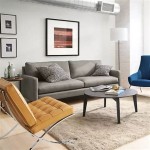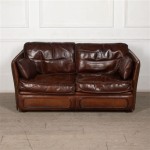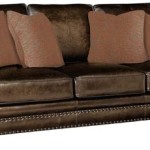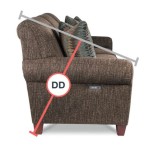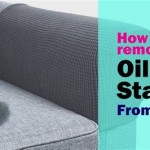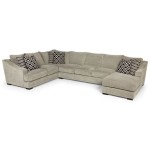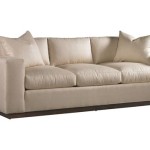Corduroy Fabric: An Ideal Choice for Sofa Covers
Corduroy fabric, with its distinctive ridged texture, has gained considerable popularity for sofa covers. Its unique aesthetic, durability, and comfort contribute to its widespread appeal. This article aims to provide a comprehensive overview of corduroy fabric, highlighting its characteristics, advantages, and considerations for its use as a sofa cover material.
Corduroy is typically woven from cotton, but it can also incorporate blends of cotton with polyester, rayon, or other synthetic fibers. The defining feature of corduroy is its "wale," which refers to the raised ribs or cords that run lengthwise along the fabric. The number of wales per inch determines the texture and appearance of the corduroy. Fewer wales per inch create a wider, more pronounced rib, while more wales result in a finer, softer texture. Standard corduroy usually ranges from 8 to 13 wales per inch.
The construction of corduroy involves weaving extra sets of yarn into the base fabric to form vertical ribs. These ribs are then cut, creating the distinct parallel cords that are characteristic of the material. The cut ends of the yarns are brushed, giving the corduroy its soft, plush feel. The backing of the fabric provides stability and support to the raised wales, contributing to the overall durability of the material.
Durability and Longevity
One of the primary advantages of corduroy for sofa covers lies in its inherent durability. The tightly woven structure and the use of robust fibers, such as cotton and polyester, contribute to its resistance to wear and tear. Corduroy can withstand frequent use and resist abrasion, making it a suitable choice for high-traffic areas and households with children or pets.
The raised wales of corduroy provide an additional layer of protection against surface damage. They act as a buffer, absorbing minor impacts and preventing them from directly affecting the underlying fabric. This feature helps to prolong the lifespan of the sofa cover and maintain its aesthetic appeal over time.
However, it's important to consider the specific type of corduroy when assessing its durability. Thicker, heavier corduroy with fewer wales per inch tends to be more resistant to wear than finer, thinner varieties. The fiber composition also plays a role, with cotton-polyester blends often exhibiting greater durability compared to pure cotton corduroy.
Proper care and maintenance are essential for maximizing the lifespan of a corduroy sofa cover. Regular vacuuming can help to remove dust and debris, preventing them from becoming embedded in the fabric and causing abrasion. Promptly addressing spills and stains is crucial to prevent permanent discoloration or damage. Following the manufacturer's cleaning instructions is highly recommended to avoid shrinkage, fading, or other adverse effects.
Comfort and Aesthetic Appeal
Beyond durability, corduroy offers a unique combination of comfort and aesthetic appeal, making it a desirable choice for sofa covers. The soft, plush texture of the fabric provides a comfortable seating experience. The raised wales create a gentle massaging effect, enhancing relaxation and promoting a sense of coziness.
Corduroy's distinctive texture adds visual interest and depth to the sofa, creating a warm and inviting atmosphere. The fabric is available in a wide range of colors and patterns, allowing for customization to suit various interior design styles. From classic neutrals to bold hues, corduroy can complement a variety of color palettes and design aesthetics.
The wale count of the corduroy can significantly impact its aesthetic appeal. Wider wales create a more casual, rustic look, while finer wales offer a more sophisticated, refined appearance. The choice of wale count depends on the desired style and the overall aesthetic of the room.
Furthermore, corduroy can be combined with other textures and materials to create a more dynamic and visually appealing sofa cover. For example, incorporating corduroy panels with leather or velvet accents can add depth and dimension to the design. Experimenting with different textures and patterns can create a unique and personalized sofa cover that reflects individual style preferences.
The inherent texture of corduroy can also help to conceal minor imperfections or blemishes on the sofa frame. The raised wales create a distracting effect, making it less noticeable when existing furniture has scratches, stains, or other signs of wear. This can be particularly beneficial when reupholstering older sofas or updating the look of existing furniture without replacing it entirely.
Considerations for Choosing Corduroy
While corduroy offers numerous advantages for sofa covers, there are several factors to consider before making a selection. One important consideration is the potential for shedding. Corduroy, particularly when new, can shed fibers, leaving a residue on clothing or other surfaces. This shedding typically diminishes over time with regular use and cleaning.
Another consideration is the potential for wrinkling. Corduroy can be prone to wrinkling, particularly after prolonged use or storage. While some wrinkles may disappear naturally over time, others may require ironing or steaming to remove. It's important to follow the manufacturer's instructions for ironing or steaming corduroy to avoid damaging the fabric.
The colorfastness of corduroy can also vary depending on the dyeing process and the quality of the dyes used. Darker colors tend to be more prone to fading than lighter colors, particularly when exposed to direct sunlight. Choosing high-quality, fade-resistant corduroy can help to minimize the risk of color fading over time.
The weight of the corduroy is also an important consideration, particularly for sofa covers. Heavier corduroy tends to be more durable and resistant to wear, but it can also be more difficult to work with and may require professional upholstery services. Lighter corduroy is easier to handle and can be suitable for DIY projects, but it may not be as durable as heavier varieties.
The cost of corduroy can vary depending on the fiber composition, wale count, quality, and brand. Pure cotton corduroy tends to be more expensive than cotton-polyester blends. Finer wale corduroy may also be more expensive than wider wale varieties. Considering the budget and desired quality when selecting corduroy is important.
Maintenance requirements are a significant factor to take into account. While corduroy is generally durable, it requires regular cleaning to maintain its appearance and prevent the buildup of dust and debris. Vacuuming regularly and addressing spills promptly are essential for preserving the fabric's texture and color. Professional cleaning may be necessary for stubborn stains or for maintaining the appearance of delicate corduroy fabrics.
Finally, the overall style and aesthetic of the room should be considered when choosing corduroy for a sofa cover. Corduroy's distinctive texture can add warmth and character to a space, but it may not be suitable for all design styles. It's important to choose a corduroy fabric that complements the existing décor and enhances the overall aesthetic of the room. Samples should be obtained and compared to existing furniture and decor to ensure a cohesive look.

1m Thicken Corduroy Velvet Fabric Sofa Cover Slipcovers Solid Diy Chair Case Sew

Making The Case For Corduroy Furniture Architectural Digest

Corduroy Minihouzz Sofa Cover

1pc Solid Color Corduroy Fabric Sofa Cover In Simple Style For All Seasons Beige Shein Usa

1pc Pink Corduroy Sofa Cover With Pom Trim Shein

Cut Pile Corduroy Fabric With Non Woven Backing For Upholstery Sofa Cover China Whole And Made In Com

Corduroy Upholstery Fabric With Narrow Cord P M Roll

The Cloud 3 Seater Sofa With Sage Corduroy Slipcover Black Mango

1m Thicken Corduroy Velvet Fabric Sofa Cover Slipcovers Solid Diy Chair Case

Corduroy Fabric 58 60 Width Used For Car Or Sofa Covers Tela Only Lazada Ph

